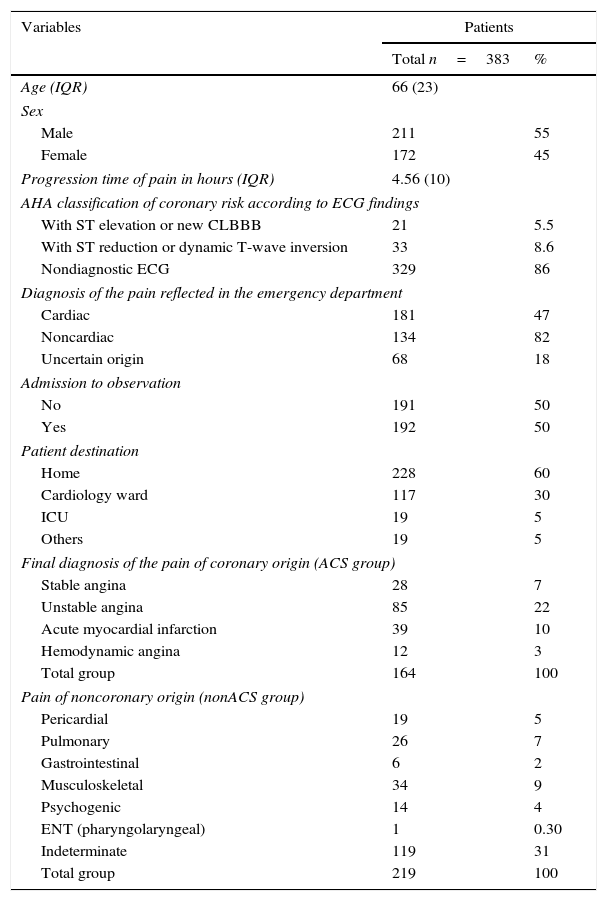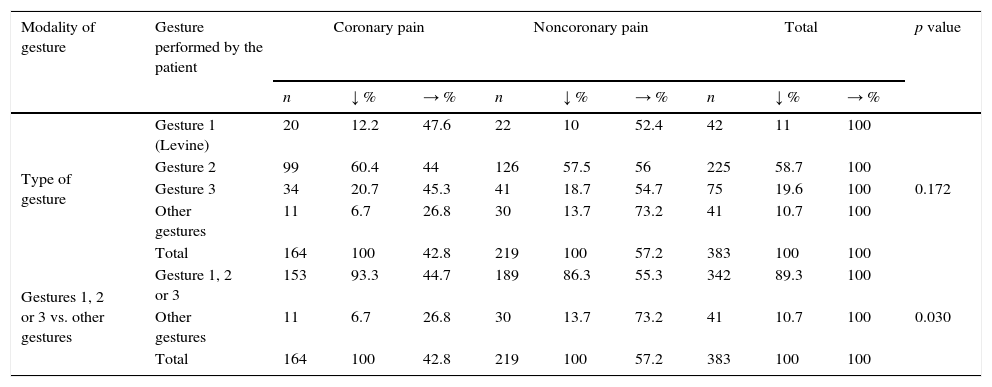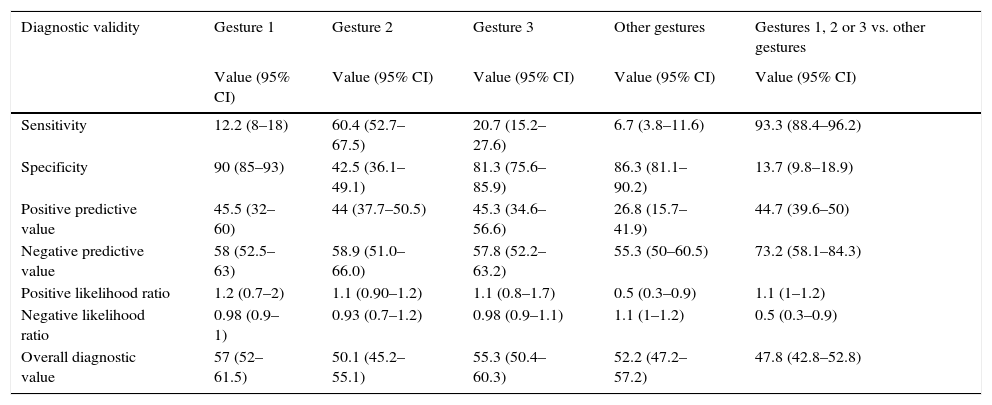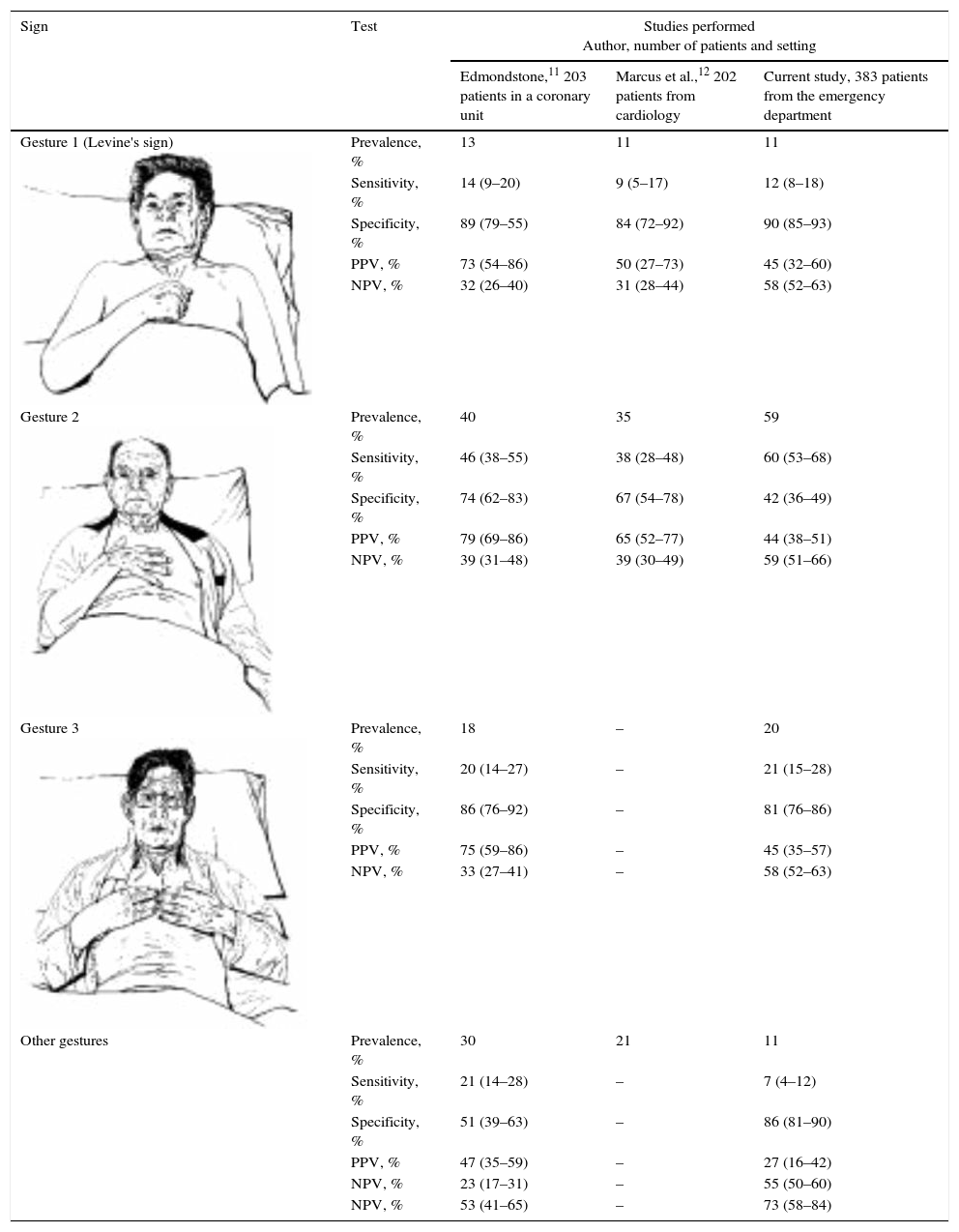To determine the frequency of 3 hand gestures by patients with chest pain and determine the diagnostic validity of the gestures in acute coronary syndrome.
Patients and methodsA prospective study was conducted on 383 adult patients treated for chest pain in an emergency department. We observed certain hand gestures, previously referred to in the medical literature as characteristic of coronary pain (gesture 1: a clenched fist held over the sternal area or Levine's sign; gesture 2: open hand located over the same area; gesture 3: both hands placed in the center of the chest), as well as other gestures. We analyzed their association with the coronary origin of the pain.
ResultsWe confirmed the coronary origin of the pain in 164 (43%) patients (ACS group). The other 219 patients (57%) did not have a coronary origin for the pain (nonACS group). Eighty-nine percent of the patients identified their pain with one of the 3 classical gestures. The most frequent gesture was number 2, both overall (59%) and by group (60% ACS group; 57.5% nonACS group). There was no significant association between the type of gesture and the final diagnosis (p=.172). The greater specificity corresponded to Levine's sign (90%), followed by other gestures (86%) and gesture 3 (81%).
ConclusionsAlthough 89% of the patients expressed their chest pain with one of the 3 manual gestures classically associated with coronary pain, none achieved sufficient diagnostic accuracy to be used as indicative of this type of pain.
Comprobar la frecuencia de 3 gestos realizados con las manos por los pacientes con dolor torácico y determinar su validez diagnóstica en el síndrome coronario agudo.
Pacientes y métodosEstudio prospectivo de 383 pacientes adultos asistidos en un servicio de urgencias por dolor torácico. Se observó la realización de determinados signos gestuales con las manos, previamente referidos en la literatura médica como característicos de dolor coronario (gesto 1: mano en puño dispuesta sobre zona esternal o signo de Levine; gesto 2: mano abierta situada en la misma localización; gesto 3: ambas manos colocadas en el centro del tórax), así como la de otros gestos. Se analizó su asociación con el origen coronario del dolor.
ResultadosEn 164 (43%) pacientes se confirmó el origen coronario del dolor (grupo SCA), y en 219 (57%) no se confirmó (grupo no SCA). Un 89% de pacientes identificaron su dolor con alguno de los 3 gestos clásicos. El más frecuente fue el 2, tanto globalmente (59%) como por grupos (60% grupo SCA; 57,5% grupo no SCA). No hubo asociación significativa entre el tipo de gesto realizado y el diagnóstico final (p=0,172). La mayor especificidad correspondió al signo de Levine (90%), seguida de otros gestos (86%) y del gesto 3 (81%).
ConclusionesAunque el 89% de los pacientes expresaron el dolor torácico con alguno de los 3 gestos manuales clásicamente asociados al dolor coronario, ninguno de ellos alcanzó suficiente precisión diagnóstica para ser utilizado como indicativo de este tipo de dolor.
Article
Diríjase desde aquí a la web de la >>>FESEMI<<< e inicie sesión mediante el formulario que se encuentra en la barra superior, pulsando sobre el candado.

Una vez autentificado, en la misma web de FESEMI, en el menú superior, elija la opción deseada.

>>>FESEMI<<<













